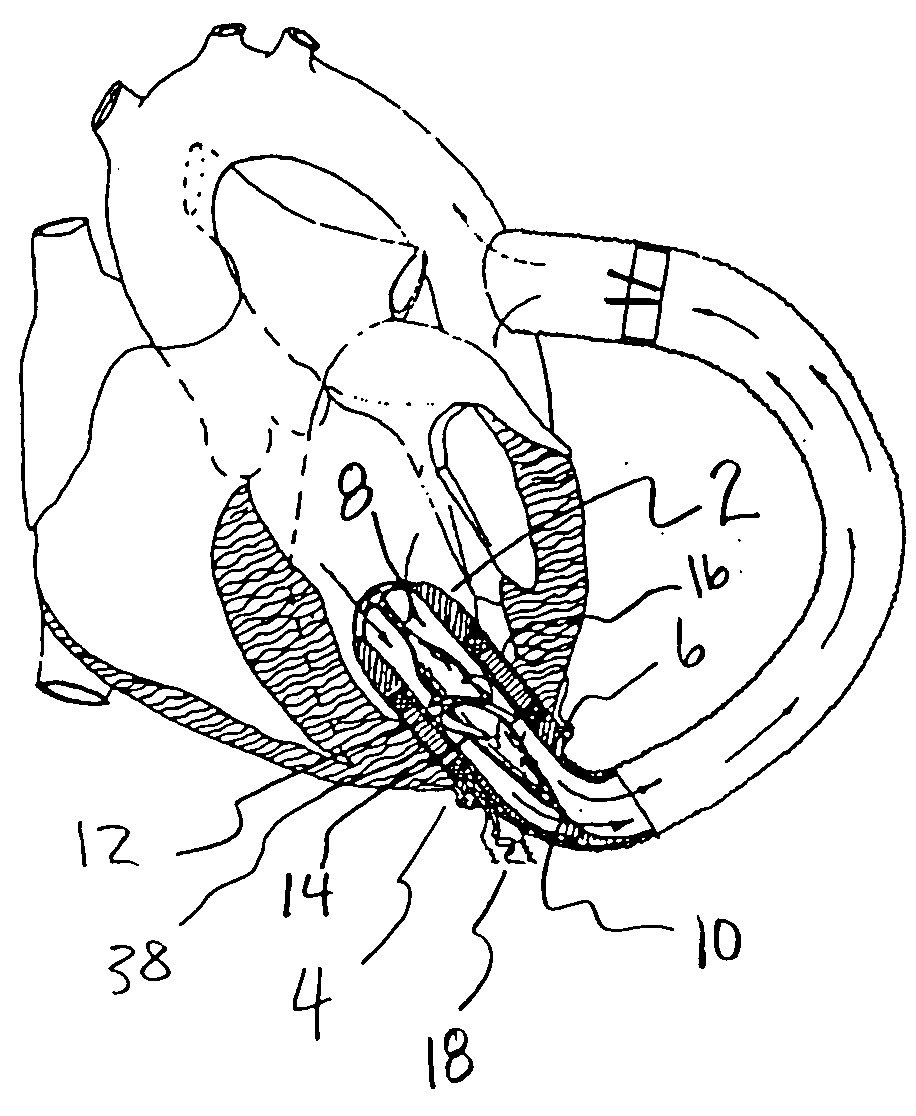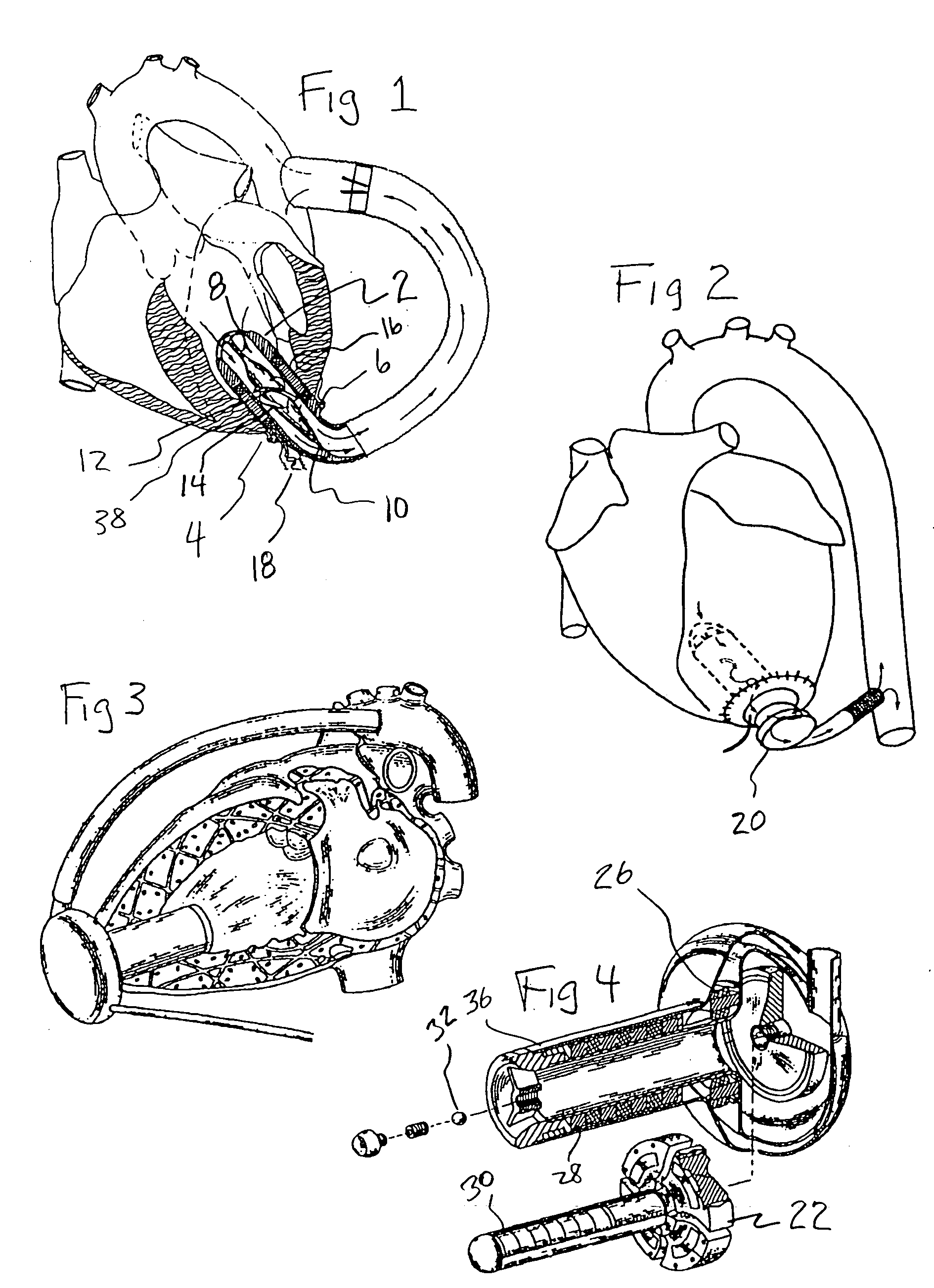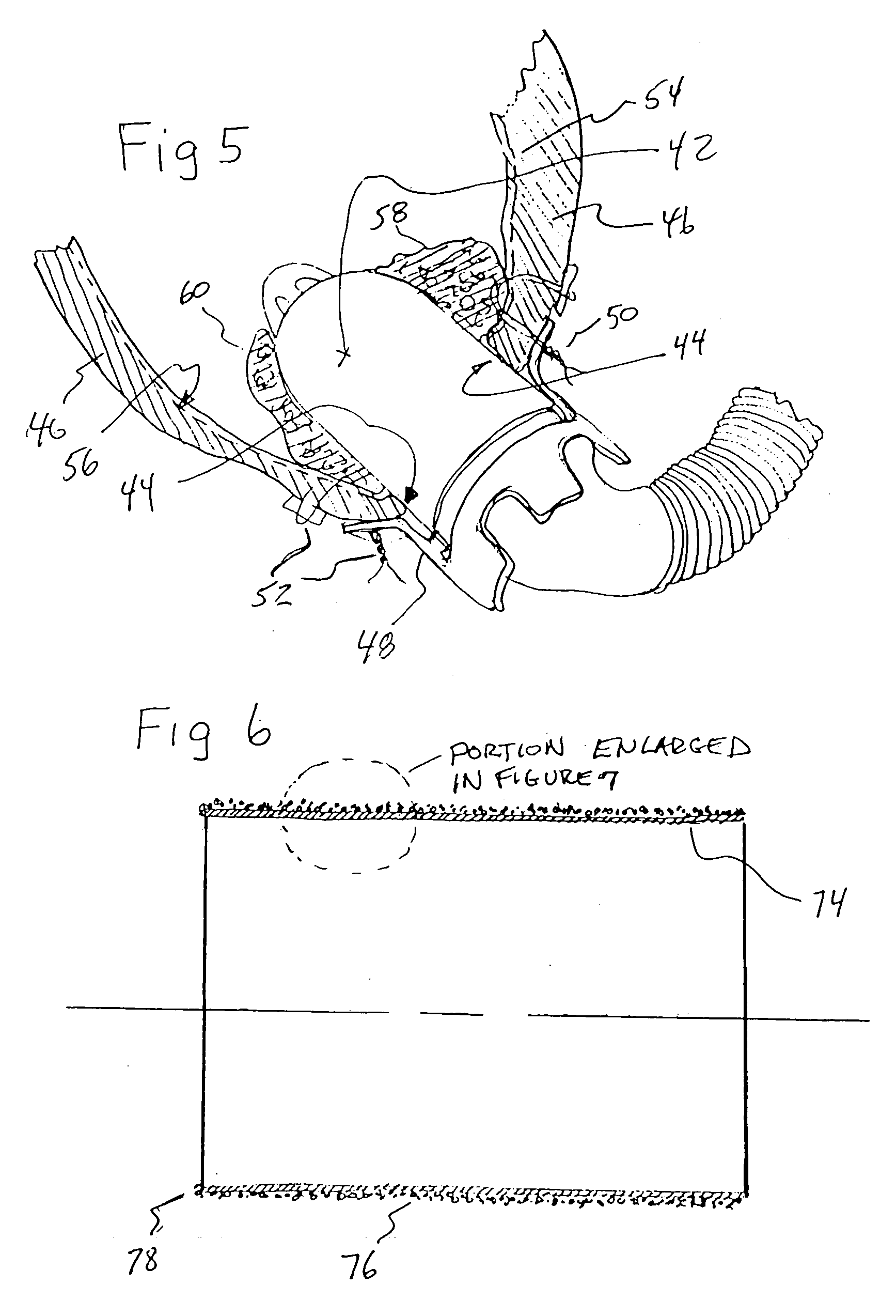Textured conforming shell for stabilization of the interface of precision heart assist device components to tissues
a technology of conforming shell and ventricular assist device, which is applied in the direction of therapy, other medical devices, blood pumps, etc., can solve the problems of not being able to survive, not receiving sufficient oxygen and nutrients, and not being able to provide good material
- Summary
- Abstract
- Description
- Claims
- Application Information
AI Technical Summary
Benefits of technology
Problems solved by technology
Method used
Image
Examples
Embodiment Construction
[0026]The present invention provides a thin wall “shell” which surrounds a ventricular assist device implanted in the heart. The assist device may be implanted into any of the four chambers of the natural heart. The most common position used in present clinical practice is the left ventricle, as illustrated in FIG. 1, from the prior art. An intraventricular axial flow pump 2 is positioned in the left ventricle and is implanted through a hole in the wall of the left ventricle 4, typically cut with a special instrument called a coring knife. The axial pump includes a rotor 6, supported on bearings 8, 10. The rotor supports impeller blades 12, 14. The armature of a motor, 16, receives electric power via a cable, 18. Properly timed power pulses induce magnetic fields in the motor armature which apply magnetic force to magnets within the rotor. The blood pumping device may be substantially implanted inside the heart, as in the prior art embodiment of FIG. 1, or it may utilize some elemen...
PUM
 Login to View More
Login to View More Abstract
Description
Claims
Application Information
 Login to View More
Login to View More - R&D
- Intellectual Property
- Life Sciences
- Materials
- Tech Scout
- Unparalleled Data Quality
- Higher Quality Content
- 60% Fewer Hallucinations
Browse by: Latest US Patents, China's latest patents, Technical Efficacy Thesaurus, Application Domain, Technology Topic, Popular Technical Reports.
© 2025 PatSnap. All rights reserved.Legal|Privacy policy|Modern Slavery Act Transparency Statement|Sitemap|About US| Contact US: help@patsnap.com



